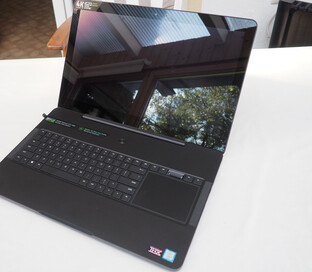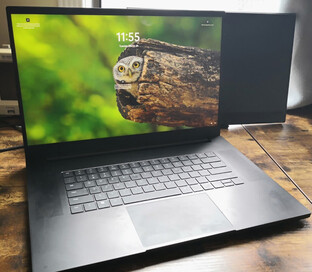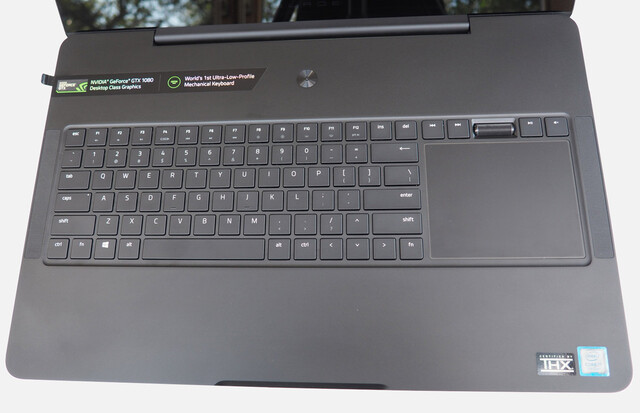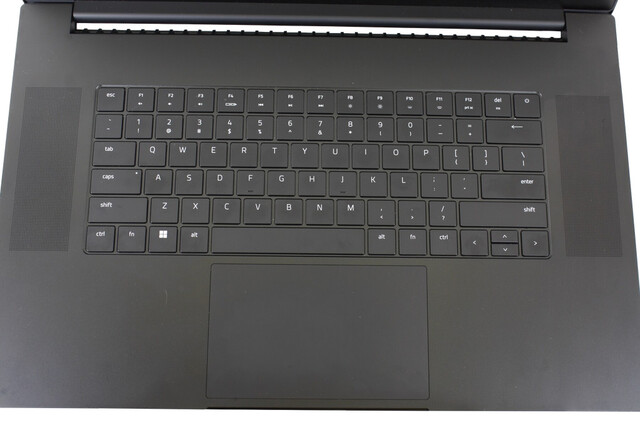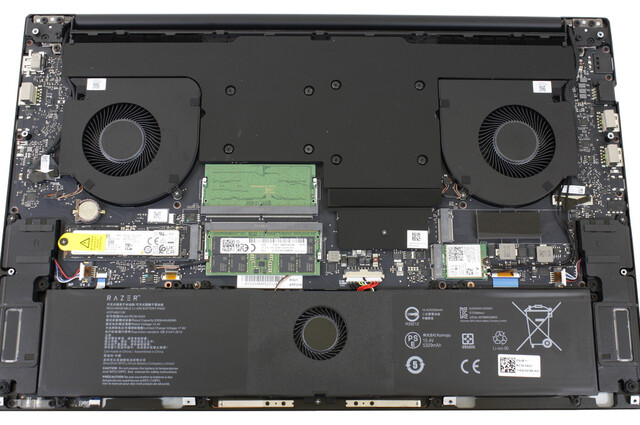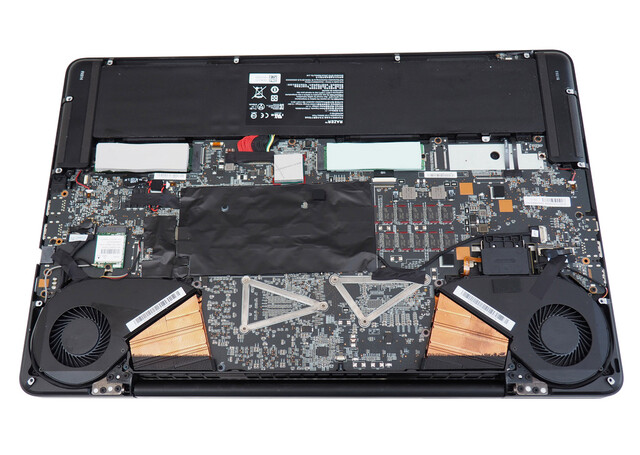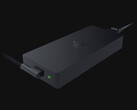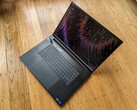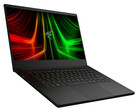The Razer Blade Pro 17 2017 (Intel Core i7-7820HK, Nvidia GeForce GTX 1080 laptop, 32 GB RAM, 512 GB SSD) and the Razer Blade 17 2022 (Intel Core i7-12800H, Nvidia GeForce RTX 3080 Ti laptop, 32 GB RAM, 1 TB) have a lot in common. Both were released as high-performance gaming laptops of the more portable variety, costing roughly US$4,000 as tested each; both were boutique enough to turn heads and steal hearts. However, a difference of about 5 years separates the two, lending us a unique chance to see just how much of a progress the computing industry was able to make within that time frame by directly comparing the two.
If you are wondering why we are pitting a "Pro" model against a non-Pro model, let us point out that Razer no longer makes Blade Pros. The last one was released in 2021; since then, ¨regular¨ models started receiving higher-end components that were previously exclusive to Pros, making higher-end Blades of 2023 and 2022 direct descendants of Blade Pros released in 2021, 2020 and so on.
1. The most impressive improvement overall: CPU performance
The 7th generation Intel Core i7-7820HK pales in comparison to the 12th generation Core i7-12800H. The former was good for roughly 770 points in the Cinebench R15 Multi benchmark in 2017; this less-than-impressive result is barely more than a third of the 2,150 points churned out by the 12800H.
This is easy to explain; 12th generation Core processors are notable for a sizeable increase in core counts compared to everything that was on offer from Team Blue before. Users upgrading to the latest Blade in 2022 were in for a much higher multi-thread performance per Watt, and per dollar, than they could possibly dream of just a year or two before.
Cinebench R15 Multi Loop
2. The largest user experience impovement: A faster screen
While the 2022 Blade had small display bezels, it was actually the display itself that we were truly happy about. Our test configuration made use of BOE´s NE173QHM-NZ1 panel for fairly low GtG response rate of 17.6 ms and decent average brightness of 294 nits - compare that to 60.8 ms and 207 nits that the Sharp LQ173D1JW33, the panel that the 2017 Blade Pro came with, managed in 2017. Both panels delivered high AdobeRGB coverage but the Sharp was bizarrely unqualified for gaming purposes, with ghosting galore and frame tearing aplenty. The BOE panel was much better, helping gamers stay alive for longer.
| Razer Blade Pro 2017 Sharp LQ173D1JW33 (SHP145A), IGZO, 3840x2160, 17.3" | Razer Blade 17 RTX 3080 Ti BOE NE173QHM-NZ1, IPS, 2560x1440, 17.3" | |
|---|---|---|
| Display | ||
| Display P3 Coverage (%) | 88.9 | 98.7 |
| sRGB Coverage (%) | 100 | 99.9 |
| AdobeRGB 1998 Coverage (%) | 99.7 | 86.2 |
| Response Times | ||
| Response Time Grey 50% / Grey 80% * (ms) | 60.8 ? | 17.6 ? |
| Response Time Black / White * (ms) | 38.4 ? | 11.4 ? |
| PWM Frequency (Hz) | 204.9 ? | |
| Screen | ||
| Brightness middle (cd/m²) | 230 | 335.9 |
| Brightness (cd/m²) | 207 | 294 |
| Brightness Distribution (%) | 83 | 75 |
| Black Level * (cd/m²) | 0.2 | 0.38 |
| Contrast (:1) | 1150 | 884 |
| Colorchecker dE 2000 * | 5.62 | 2.82 |
| Colorchecker dE 2000 max. * | 10.24 | 5.04 |
| Greyscale dE 2000 * | 4.54 | 1.7 |
| Gamma | 2.36 93% | 2.14 103% |
| CCT | 6625 98% | 6382 102% |
| Color Space (Percent of AdobeRGB 1998) (%) | 88 | |
| Color Space (Percent of sRGB) (%) | 100 | |
| Total Average (Program / Settings) |
* ... smaller is better
3. Most important for gamers: GPU performance
Much like the 2017 Razer was good for nearly all games known at the time at 1440p, High/Highest quality preset, the 2022 model would let one play most games released to that date at the same resolution and with the same quality settings. Things would slow down quite a bit at 4K UHD in both cases, requiring the gamer to trade away a bit of quality for some extra frames per second.
That´s not to say that the RTX 3080 Ti (laptop) was not an impressive step up compared to the GTX 1080 (laptop). When playing The Witcher 3 at 1080p with Ultra quality on the 2017 Blade Pro, we got an average of 65 fps; this baloons to 125 fps with the 2022 model, an improvement of nearly 100%. As the icing on the cake, the owner of the 2022 model would be enjoying the updated set of Nvidia technologies including ray tracing.
| The Witcher 3 | |
| 1920x1080 High Graphics & Postprocessing (Nvidia HairWorks Off) | |
| Razer Blade 17 RTX 3080 Ti | |
| Razer Blade Pro 2017 | |
| 1920x1080 Ultra Graphics & Postprocessing (HBAO+) | |
| Razer Blade 17 RTX 3080 Ti | |
| Razer Blade Pro 2017 | |
4. Most important for frequent travelers: Portability
Looking at external differences between the 2022 model and the 2017 model, the large screen bezels of the latter were done away with (as was the dedicated power button), the touchpad was moved and the mechanical keyboard was replaced with a more conventional option to allow for a slimmer profile. As a result, the 2022 model came to be much more portable and easier to handle than the older one was. 22 x 424 x 281 millimeters of the 2017 Blade Pro were turned into 19.9 x 395 x 260 millimeters; the original weight of 3.6 kg got reduced to 2.7 kg.
Internal design differences were many. One, the updated speakers delivered a much wider and more linear sound spectrum. Two, the newer model would be significantly quieter if subjected to high load conditions as it featured three internal fans whereas the 2017 model had to make do with two fans. Battery capacity got reduced from 99 Wh to 82 Wh, leading to slightly shorter battery life when gaming; counterintuitively, it was now possible to browse the Web via Wi-Fi for 5+ hours instead of the former 3+ hours, thanks to the more efficient hardware.
| Razer Blade Pro 2017 i7-7820HK, GeForce GTX 1080 Mobile, 99 Wh | Razer Blade 17 RTX 3080 Ti i7-12800H, GeForce RTX 3080 Ti Laptop GPU, 82 Wh | |
|---|---|---|
| Battery runtime | ||
| WiFi v1.3 (h) | 3.3 | 5.5 |
| Load (h) | 1.4 | 1.1 |
The 2022 Blade´s internal layout looked much cleaner than that of the 2017 model while also offering the option of upgrading RAM and not just the SSD.
5. Faster ports, faster networking solutions
The 2017 model featured a Gigabit Ethernet port and a Wi-Fi 5 wireless network adapter delivering real-world data transfer rates of no more than 670 Mbit/s. For the 2022 Blade, it was 2.5 Gigabits and Wi-Fi 6E for rates up to 1470 Mbit/s, respectively.
The built-in SD card reader got three times faster, delivering up to 169 MB/s; the 2017 one was good for 52 MB/s or less.
| Networking | |
| iperf3 transmit AX12 | |
| Razer Blade 17 RTX 3080 Ti | |
| Razer Blade Pro 2017 | |
| iperf3 receive AX12 | |
| Razer Blade 17 RTX 3080 Ti | |
| Razer Blade Pro 2017 | |
6. Much faster write rate
The 2017 Blade sported two Samsung PM951 PCIe 3 SSDs for sequential read and write rates of 2.5 GB/s and 0.6 GB/s, respectively. The Blade 17 2022 that we tested only featured one PCIe 4 SSD, a Samsung PM9A1; the SSD in question allowed for a sequential read rate of 4 GB/s, and it was equally competent at writing data.
| Razer Blade Pro 2017 2x Samsung SSD PM951 MZVLV256HCHP (RAID 0) | Razer Blade 17 RTX 3080 Ti Samsung PM9A1 MZVL21T0HCLR | |
|---|---|---|
| CrystalDiskMark 5.2 / 6 | ||
| Read Seq (MB/s) | 2446 | 4082 |
| Write Seq (MB/s) | 618 | 4039 |





